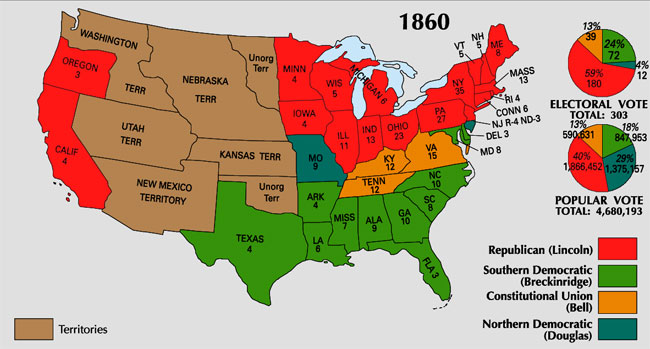
Source: 1860 Electoral Map
Four campaign posters will appear, one at a time. Complete the poster by selecting the right candidate.
The election really was two separate races. Lincoln and Douglas competed for Northern votes. Breckinridge and Bell vied for Southern votes. No camp really tried to make inroads elsewhere (and it would have been dangerous for Lincoln to travel to parts of the South).
Examine the following map that shows the results of the election. The numbers are the electoral votes the candidate won.

Source: 1860 Electoral Map
Map Questions: Answer with your notes.



Lincoln, with 180 electoral votes, earned the Constitutional majority to be president. It showed just how many more people lived in the North that he did not earn a single Southern electoral vote, but became president anyway. Lincoln's 1.8 million popular votes were only about 40% of all the ballots cast, the lowest percentage of the popular vote for any successful presidential candidate in U.S. history.
It did not take long for people in South Carolina to convene and start the vote on secession. The South saw the political power that the North had amassed and combined with all of the other economic and social differences—plus the wild events of the 1850s—decided that in order to preserve its way of life (especially slavery) it needed to be its own country.
Sources of images used for this section as they appear, top to bottom: